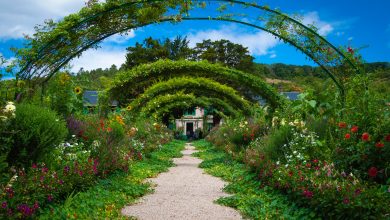How to Make a Garden Bed

Besides the advantage that a raised garden bed lessens physical distress while weeding, there are a handful of reasons why a gardener would want to make one rather than settle for an in-ground bed. Sometimes, it’s to avoid the clayey soil that doesn’t support your garden plants. It may also be to have more control over your garden soil.
A garden bed affords you the luxury of growing your plants in a suitable soil raised above the ground. So get your planks, newspapers, and soil ready. Let’s get to work. Before then, here are a couple of things to consider before getting your equipment in place.
1. Bed Material
Wood
There are a variety of raised bed materials you can choose to make your garden bed. However, most raised garden beds are constructed with wood because wood is durable, inexpensive, and quite handy.
The following are the types of wood suitable for your raised garden bed.
Decay-Resistant Wood
To prevent termites from having a feast around your wood, we advise that you opt for lumbers such as cedar, mahogany, redwood, black locust, cypress, and white oak. These types of wood are void of any chemicals. Therefore, they can’t bring harm to your soil or plants.
Decay-resistant wood is essential for the longevity of your bed. So if you’re on a small budget, ensure that you don’t wander away from these alternatives.
Composite Lumber
Composite lumbers aren’t your average wood. They usually appear more elegant than the traditional kinds of wood, as they’re a combination of plastic, straw, and wood. They’re also long-lasting. However, the chemicals used in binding this mixture may be harmful to your plants in the long run.
Pressure-Treated Woods
These are categories of wood that are water or pressure-treated, which makes them durable. Alkaline copper quat is a perfect choice because it contains preservatives such as copper and quat, which fortify the timber against fungi, bacteria, and insect raids.
However, pay no attention to the conventional pressure-treated wood containing harmful preservatives such as arsenic and chromium. These toxic chemicals are likely to get into your soil and plants over time.
As a precautionary measure, avoid burning this type of wood or inhaling the sawdust. Also, ensure to wear your gloves while handling it and keep your kids away from its reach.

Rock
Rock is ideal for those whose residence is endowed with the material, as it isn’t an economical choice. However, it’s a very durable option and may be the foundation for a succession of gardens.
If you prefer this material, all you’ve got to do is get cement to hold the rocks together to the heights that you desire.
Bricks or Blocks
Bricks are also not pocket-friendly. Nevertheless, they last as long as you may desire. You can opt for the inexpensive substitute, which is the blocks. However, be wary of the block’s ingredients, as some are toxic.
2. Size of Your Bed
We recommend that you keep the width of your beds ultimately at four feet and its length at eight feet. This proffered measurement is to allow you to reach every part of the bed while planting or weeding. We also suggest that you keep the height of your bed between 10-12 inches so that the plant’s roots can go deep enough, especially if your beds are on a hard surface.
3. Location of Your Bed
Check for the sloppy ground around the place you’re about to make your bed. Unless you can level it, you should very much avoid an uneven surface.
Furthermore, there’s no limit to where you can position your bed. It’s okay to have it in your front yard or side yard as long as you have a suitable surface that absorbs moisture well.
4. Make a Plan for Irrigation
There are different means you can employ to water your plants. They range from a self-watering can to a soaker system, drip irrigation system, and of course, a sprinkler. It all depends on how much you’re willing to spend.
5. Soil Type
The hallmark of a raised garden bed is that it affords gardeners the opportunity of planting their veggies or ornaments in very suitable soil. So you must maximize this privilege by filling your beds with quality soil. All you have to do is decide on which plants you want to have in your garden and then find out the most suitable soil for them. However, we advise that you go for a triple mix soil containing dark loam, compost, and sandy soil.
Now that we’ve informed you of the things to consider and put in place, it’s time to do the work.
How to Make a Garden Bed
Position Your Planks
Level your garden soil and horizontally place your planks on them such that their edges touch one another.
If you can’t afford corner braces, you may use rebar to give each corner of the positioned planks some support. Using a hammer, knock two rebars into the ground along the longer planks (for a rectangular bed). Do this a foot from the ends of the wood.
Use More Rebar
Ensure that you dig in two more rebars along the longer planks and one more along the shorter planks. Subsequently, hammer the rebar into the ground so that they’re few inches away from the top of the planks. In other words, uncover five to ten inches of the rebar above the ground. This measure will enable the frame to withstand the other processes.
Line the Floor of Your Bed
First, you have to add a layer of leaves, grass, and wood chips to the base of your soil. Then, spread your newspaper or cardboard on top. Ensure that you adequately cover the entire floor with the material you’re using to form a layer. The combination will decompose as time goes on. Afterward, moisturize the floor so that it’s adequately wet, but not to the point of overflow.
Add Your Soil
Having done all of the above, fill up your bed with an excellent blend of loamy soil and compost, or the recommended tripled mix soil. Ensure that you also test your soil’s pH before filling with consideration for your type of garden.
Although raised beds are very good with drainage, nonetheless, they quickly get dehydrated. So ensure to water your plants as often as you can.

Advantages of Raising Your Beds
You might think that the only advantage you get from raising your garden bed is the neatness it provides your garden. However, it’s more than that. Here are appealing reasons why you should get those planks and have them surround your soil.
1. Fewer Weeds
Weeding is a gardening chore from which even master gardeners shy away. But with the help of a raised bed, your weeding days are almost over.
As opposed to tilling, which enables more weeds to grow by burying them in the soil, a raised bed gives you the opportunity to mulch and then rake weeds as soon as you’re ready to plant again.
2. Raised Beds Don’t Last Forever
Since raised beds are temporary, there’s one less thing to worry about when nurturing a garden in a rented yard. With the flexibility of this choice, your landowner is more likely to permit you to have your garden as you wish. A removable box or bed kit is also an excellent choice in a situation like this.
3. Raised Beds Make Excellent Soil
Raised beds are ideal for garden lovers who don’t have the best soil to support their type of plants. All you have to do is purchase a befitting variety and fill up your bed.
Moreover, unlike in-ground gardens that expose plants to some degree of poisoning from polluted water or heavy metals, a raised bed enables you to plant your veggies in healthy soil.
4. Beginner-Friendly
You don’t have to be a gardening master to erect your bed and fill it up with soil. Conversely, lots of learning and hard work are necessary to begin as an in-ground gardener. So if you’re just starting to gain grounds in the gardening world, it’s best to start with a raised bed garden.
5. Better Drainage
You don’t have to worry about what will become of your garden as soon as the rainy season commences or your region gets hit with a flood because a raised bed is a sure bet when it comes to its drainage capacity. This characteristic also helps to improve the soil temperature and allow plants to grow during spring.
6. Bye to Tilling
In-ground gardeners ensure to till their soil annually and also to fertilize and weed. This situation isn’t the case for raised-bed gardeners because all you have to do subsequently is add compost, mulches, and manure atop your soil and watch them make their way into the ground.
7. Less Body Strain
Raised beds aren’t one to fast-track your retirement from gardening. The higher the beds, the less back and knee issues you have to handle. This bed is an excellent choice for both young and old gardeners alike.
8. Bye to Soil Compaction
Raised beds don’t require you to step into their environment, thereby harming the soil with your foot. Hence, soil compaction problems aren’t one of the troubles you’ll be dealing with here.
9. Good Spacing
With the help of a raised bed, you don’t have to put up with weird spacing in your garden. Gardens are such an excellent and healthy source of food and beautification. Therefore, it’s not a bad investment to put in all that you can to have the best one there is.



